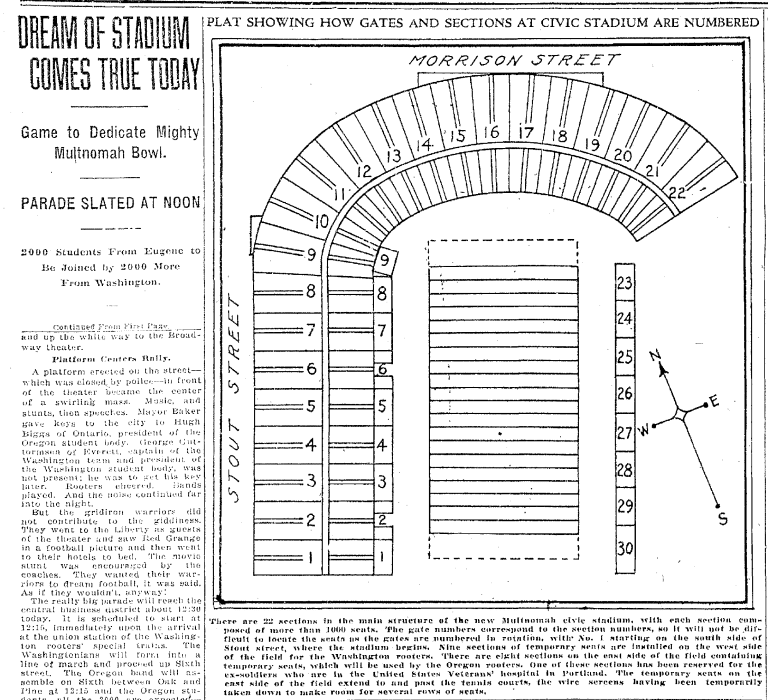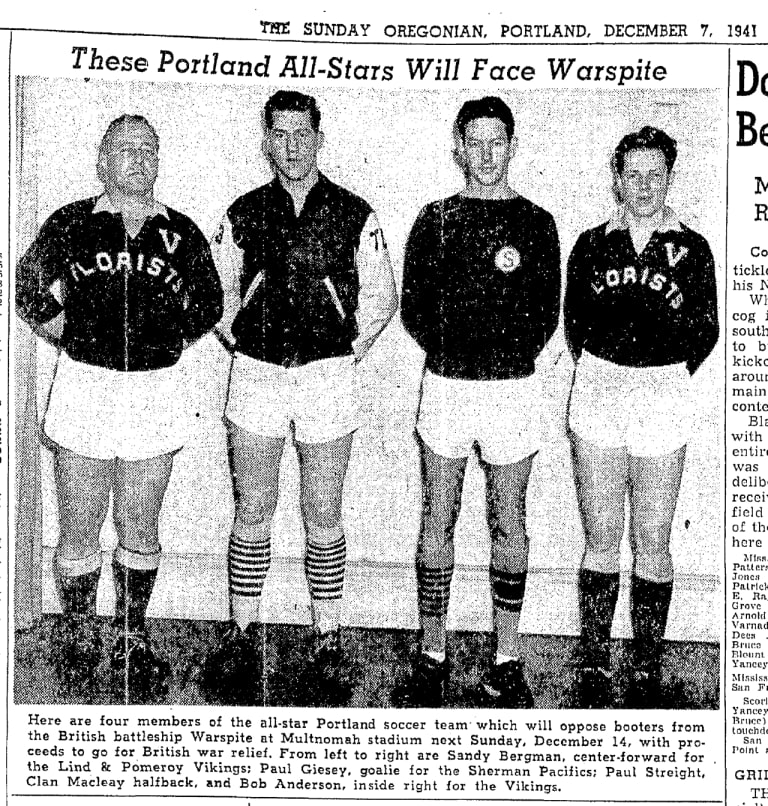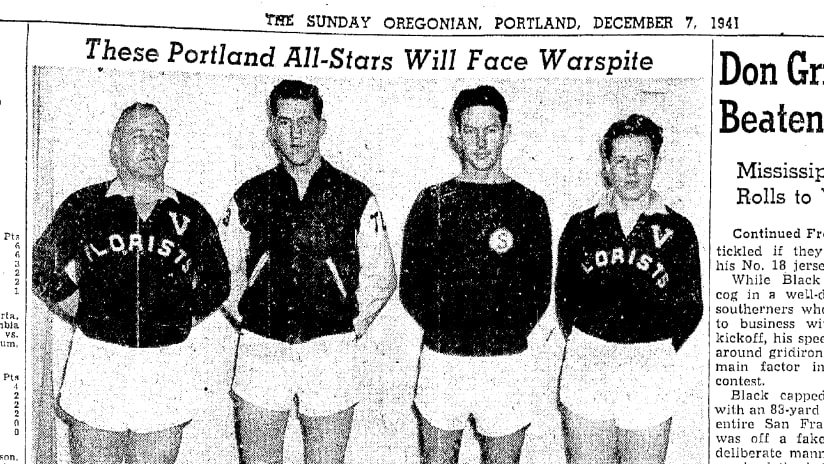Editor’s Note: Venerable Providence Park turned 90 years old this year. Designed by A.E. Doyle—a ubiquitous architect for his era who designed the downtown Multnomah County Library, the Meier & Frank Building (now The Nines Hotel) and much of Reed College, among others—Multnomah Stadium, as it was first called, was built as part of the neighboring Multnomah Athletic Club in 1926.
Before becoming an American soccer mecca, the stadium hosted countless sports and non-sporting events as well as undergoing a few name changes adjusting from Multnomah Stadium to Civic Stadium to PGE Park to JELD-WEN Field and finally to the current Providence Park. From ski jumping to greyhound racing to major college football, the stadium has become a civic icon in the Rose City.
While soccer has emerged as its main event with the dawn of a new century, the beautiful game has made a home at the stadium throughout its 90-year history. Timbers.com will be running occasional pieces throughout the year on the different soccer eras at Providence Park. This first chapter focuses on the time between the stadium’s grand opening on Oct. 9, 1926 and World War II. The majority of the information was gathered using and cross-referencing the Oregonian’s archives.
“Four college presidents, six bands and 4,000 young men and women will be in that mighty parade.”
--The Oregonian, 1926
The opening of Multnomah Stadium in 1926 was a celebrated event in Portland with dignitaries from across Portland and Washington visiting with a massive parade commemorating the moment. Though that “other” football marked its day of opening, soccer did not follow long behind.

Photo: The Oregonian, circa 1926
Like most hallowed grounds, soccer at the stadium now known as Providence Park had humble beginnings. A world away from the professional soccer leagues that play there today, in the first few years of the field, the Portland Soccer League played games once a week during the fall and winter of 1928-1929. The local league rotated its games through five locations—Multnomah Stadium, Wall Street Park (this St. John’s neighborhood field was a hotbed of soccer in the late 20’s and early 30’s and hosted numerous city and state championships), Grant Park, Columbia Park, and Sellwood Park.
The 1928-1929 season kicked off at Multnomah Stadium with a benefit match for George Law. A Scottish-born fullback, Law was the captain of the Heathers and broke his leg in a match the previous season. This benefit match would be the first of many times the stadium was used to give back to the community.
“The teams are pretty evenly matched, and the game today promises to be one of real interest to soccer fans.”
--The Oregonian, 1931
In December of 1931, a benefit game between all-star teams from the Portland Soccer League and the Rose City League was held at the park. Proceeds from the match benefited Portland Police’s Sunshine Division—still a local partner of the Timbers even now in modern times—and raised “hundreds of dollars” for the cause. Unfortunately, the match damaged the playing surface and prevented the stadium from hosting its league matches that were meant to occur the next week.
In the four-year stretch during the Portland Soccer League’s run at Multnomah Stadium, soccer was becoming a major draw across the east coast of United States. European teams such as Scotland’s Celtic and England’s Preston North End were playing friendlies in New York, while the professional leagues featuring teams such as the Fall River Marksmen and the Bethlehem Steel were also showcasing the sport. Those leagues and matches were mainly isolated in the country’s northeast and Midwest, with Portland’s soccer community a unique hotbed on the West Coast.
“The finer points of the old-country sport will be demonstrated by this group of experts from Vancouver, B.C., when the clash with the best exponents of the game that Oregon can produce in the first international contest played here in years.”
--The Oregonian, 1933
The region’s soccer footprint expanded in 1933 when the champions of Canada’s Mainland Cup, North Shore United, took on an all-star team consisting of players from four Portland-based teams at Multnomah Stadium. The April 9th match goes down in the record books as the first international soccer match in the stadium’s history. Despite the historical nature of the match, the final score of the game wasn’t documented by the local newspapers of the time.

Image: The Oregonian, circa 1933
The match against North Shore United kicked off a string of international matches held in Multnomah Stadium during this era. In 1936, Portland welcomed the German cruiser SMS Emden to its port. The ship’s crew faced off with the German Sports Club in a friendly at the stadium. The visiting Germans secured a 3-2 victory over their hosts on Jan. 26. Ironically, the cruiser was involved in the German cause for the majority of World War II before being attacked by British bombers in early 1945.
In November of 1941, a match between crewmembers of the British warship, HMS Warspite, and players from the PSL was announced. The friendly was scheduled for Dec. 14 at the Stadium and the proceeds from the match were to benefit British war relief.
However, when Pearl Harbor was bombed on Dec. 7 of that year, the match was called off. The Warspite was being refitted in the Bremerton Naval Shipyard in Washington at the time of the bombing and was put on alert to defend the American northwest if the Japanese attacked the mainland. Despite this, a benefit match was still held on Dec. 14 with Portland taking on the Seattle Black Diamonds.
Though WWII brought upheaval across the country, soccer had made its first inroads at the future Providence Park.

Image: The Oregonian, Dec. 7, 1941












